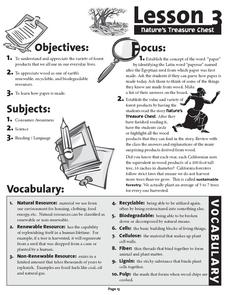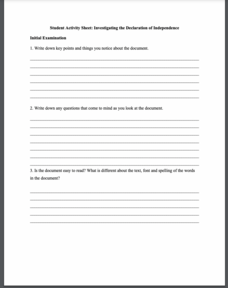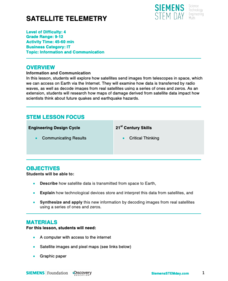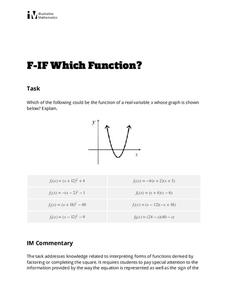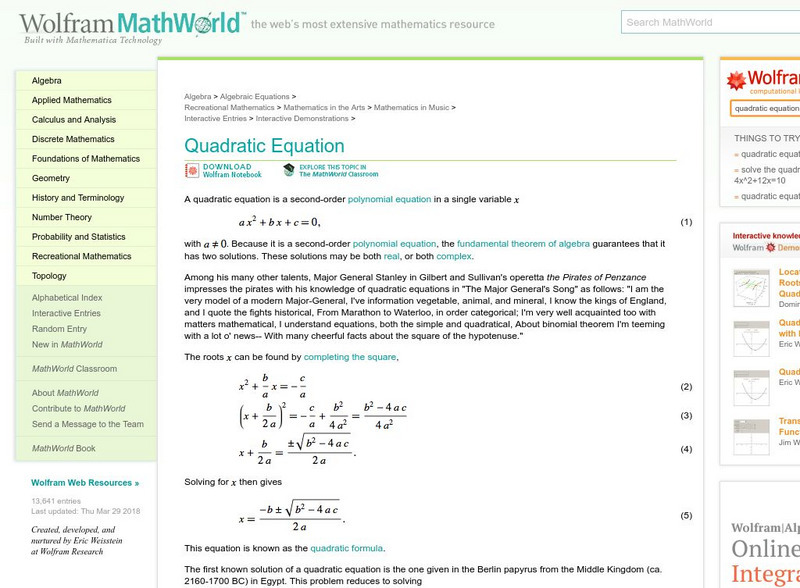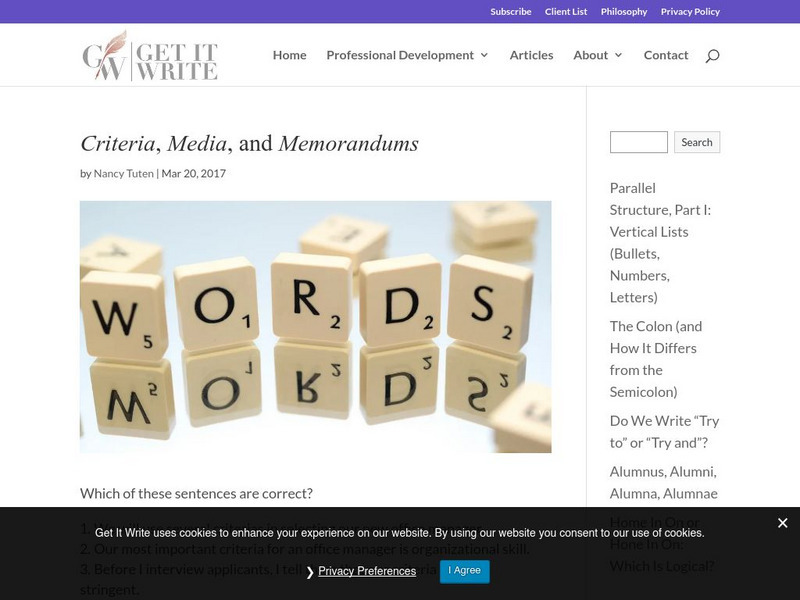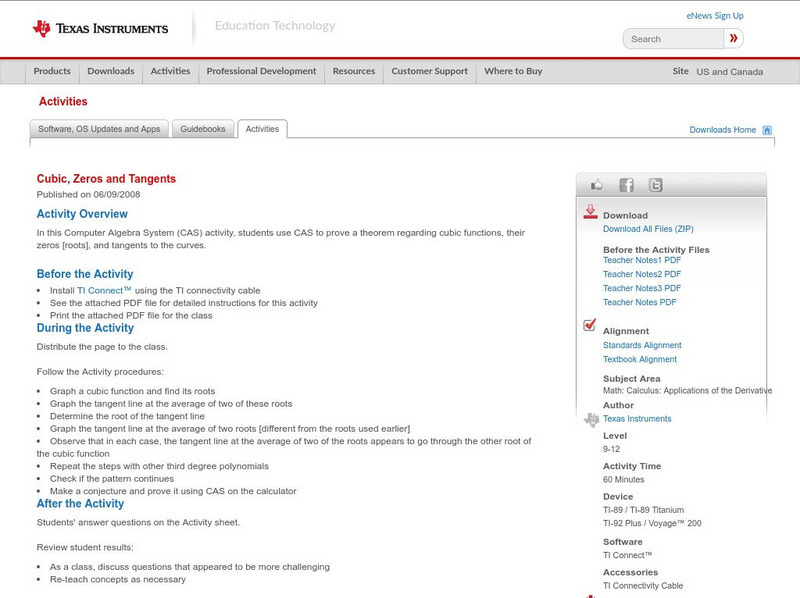Scholastic
Bingo Lingo
Word roots can be great fun when part of a game! Practice a variety of different roots with this nicely put-together bingo game that comes with plenty of instructional ideas.
Houston Area Calculus Teachers
Cubic Polynomial
Birthdays are a time for celebration, and now they're a time for calculation! An AP calculus lesson uniquely explores relationships between a polynomial function and its derivative. Learners create a cubic function based...
Curated OER
Building a General Quadratic Function
Learners rewrite a general quadratic function by completing the square to see a new form of the function that more easily identifies the x-coordinate of the vertex and the two roots of the function.
Curated OER
Pi Day: The Other Math Holiday!
Happy Pi Day! This collection of games, experiments, and activities leads participants through an exploration of the many aspects and attributes of that mysterious quantity, pi. Activities range from using statistical...
MENSA Education & Research Foundation
Pi Day Fun!
In this multi-faceted introduction to pi, participants perform a bevy of pi-related activities. Ranging from measuring household items to singing pi songs and reading pi stories, this fun and non-intimidating resource serves to bring up...
Teach Engineering
Light Intensity Lab
Let there be light. The last installment of a seven-part series has pupils conduct an experiment on light attenuation through different numbers of transparency sheets. They then relate the results back to how X-rays measure bone density.
Forest Foundation
Nature's Treasure Chest
Renewable, recyclable, and biodegradable. As part of their study of the forest ecosystem, class members read "Nature's Treasure Chest" about the many products made from trees and then craft their own recycled paper.
Roy Rosenzweig Center for History and New Media
Investigating the Declaration of Independence
Teach your class about the Declaration of Independence while giving them practice working as a team. The resource breaks participants into groups and has them answer questions about specific grievances from the Declaration of...
Discovery Education
Satellite Telemetry
Satellites require rockets to launch, but it doesn't take a rocket scientist to understand them. Future engineers learn about how satellites send data to Earth and how to interpret satellite images. They see how radio waves play a role...
Howard Hughes Medical Institute
Ebola: Disease Detectives
How did the Ebola virus first infect humans? Young virologists examine genetic sequences from the 2014 Sierra Leone outbreak to find similarities during a riveting activity. Following similar methods used by MIT and Harvard, partners...
Howard Hughes Medical Institute
Viral Lysis and Budding
How do some viruses spread so quickly, and why do they make us feel terrible? Answer these (and many more) questions through a simple yet impactful lessons. Pupils observe demonstrations that show the two methods viruses use to escape...
Illustrative Mathematics
Which Function?
Learners are given a graph of a parabola on a coordinate system, but intercepts and vertex are not labeled. The task is to analyze eight given quadratic functions and determine which ones might possibly be represented by the graph. The...
Texas Instruments
Texas Instruments: Finding the Roots of a Cubic Equation Math History
In this Derive activity, students understand how the software solves cubic equations and relate it to contributions made by del Ferro, Tartaglia, and Cardan in finding the method of solving cubic equations.
Wolfram Research
Wolfram Math World: Quadratic Equation
This MathWorld site shows how to derive the quadratic formula.
Get It Write
Get It Write: Criteria, Media, and Memorandums
Do you know when to use "criteria" and when to use "criterion?" What about "media" and "medium?" The correct singular and plural usage of these words can cause confusion. This site gives a good explanation of how to use these words...
Texas Instruments
Texas Instruments: Cubic, Zeros and Tangents
In this Computer Algebra System (CAS) activity, students use CAS to prove a theorem regarding cubic functions, their zeros [roots], and tangents to the curves.
Interactive Mathematics
Interactive Mathematics: Newton's Method
This lesson provides an example demonstrating the iterative method of finding the roots of a function using derivatives.
Help Algebra
Help algebra.com: Quadratic Formula
This presentation of the quadratic equation includes a discussion on the discriminant and a derivation of the quadratic formula.






